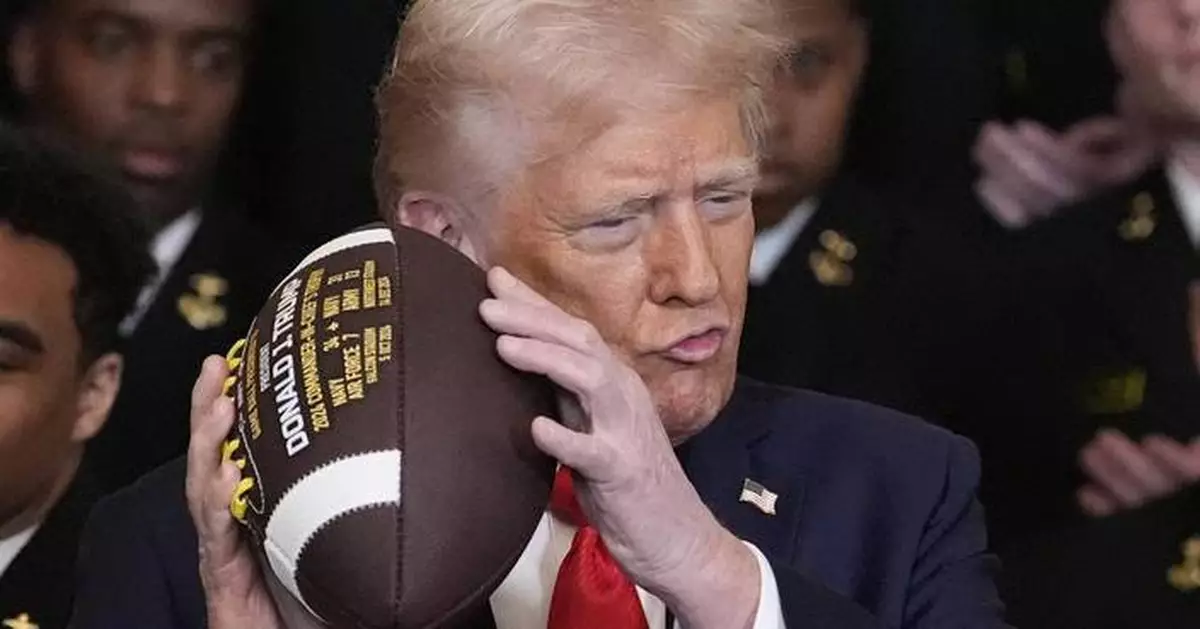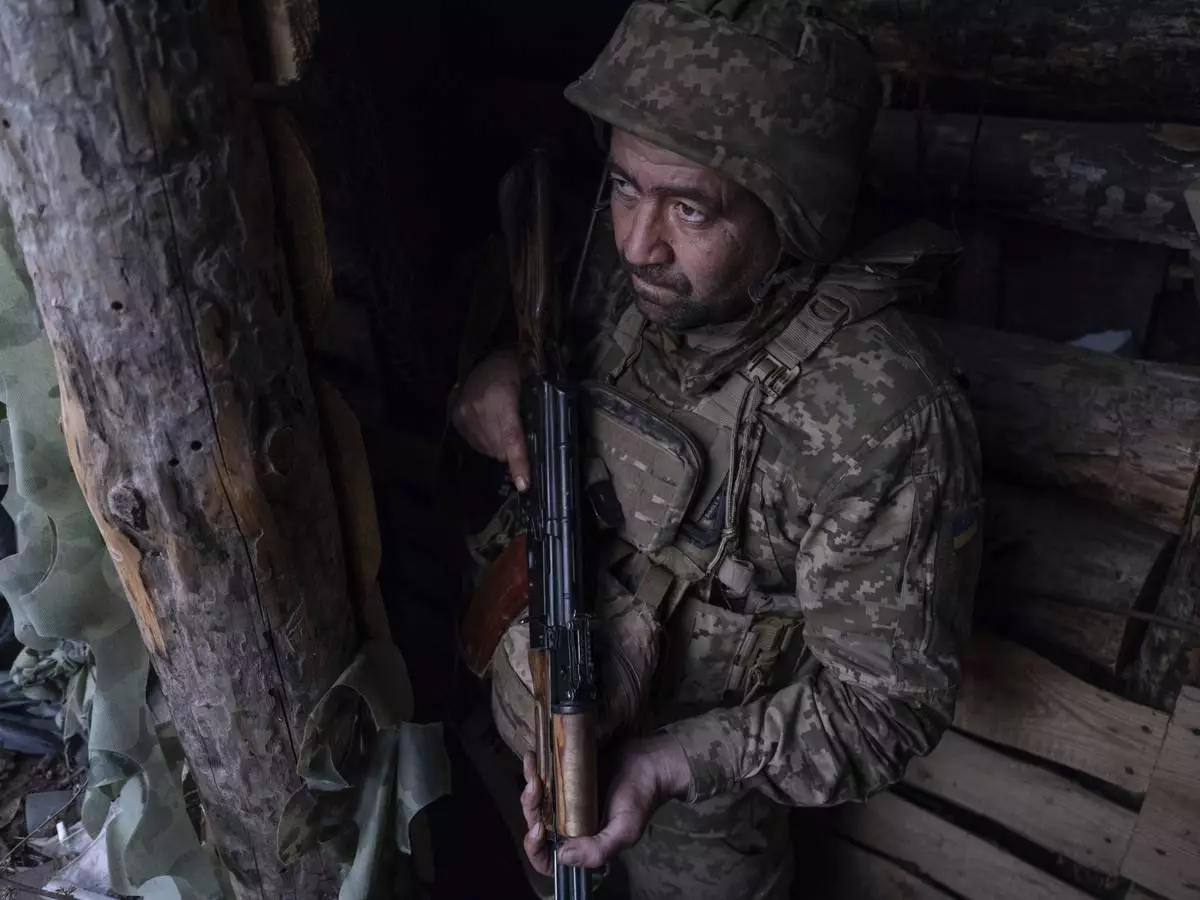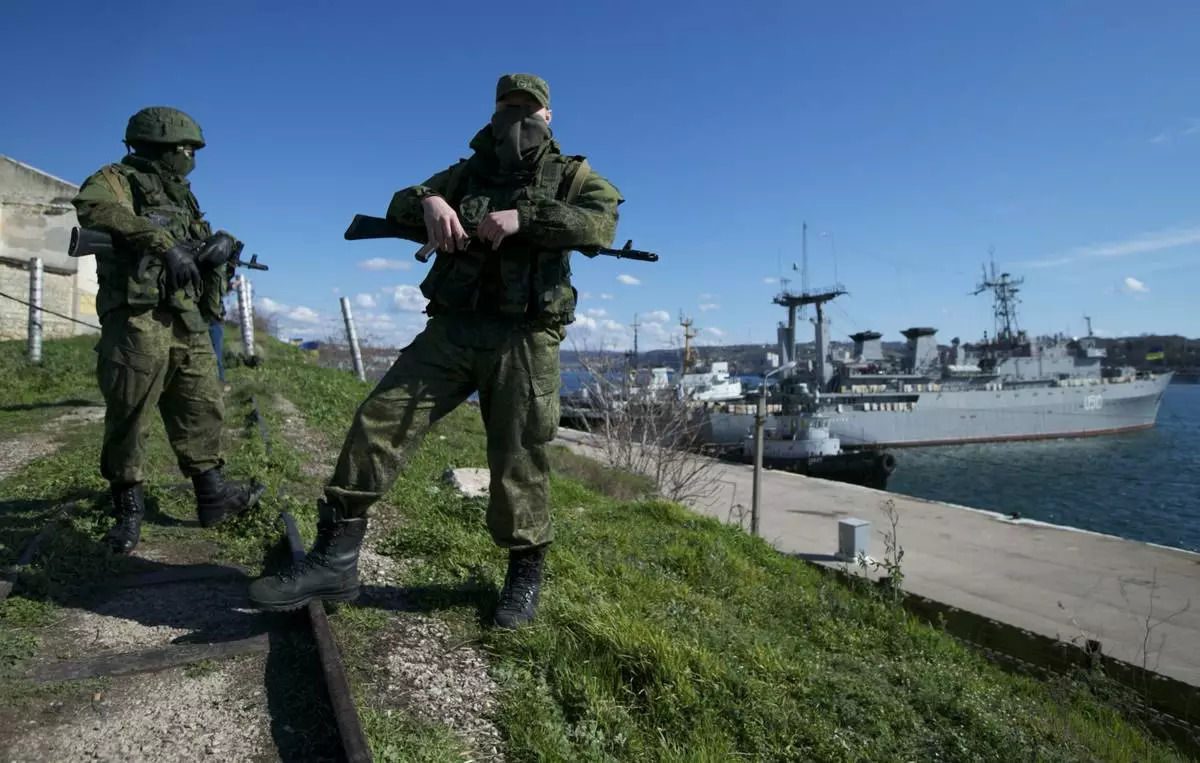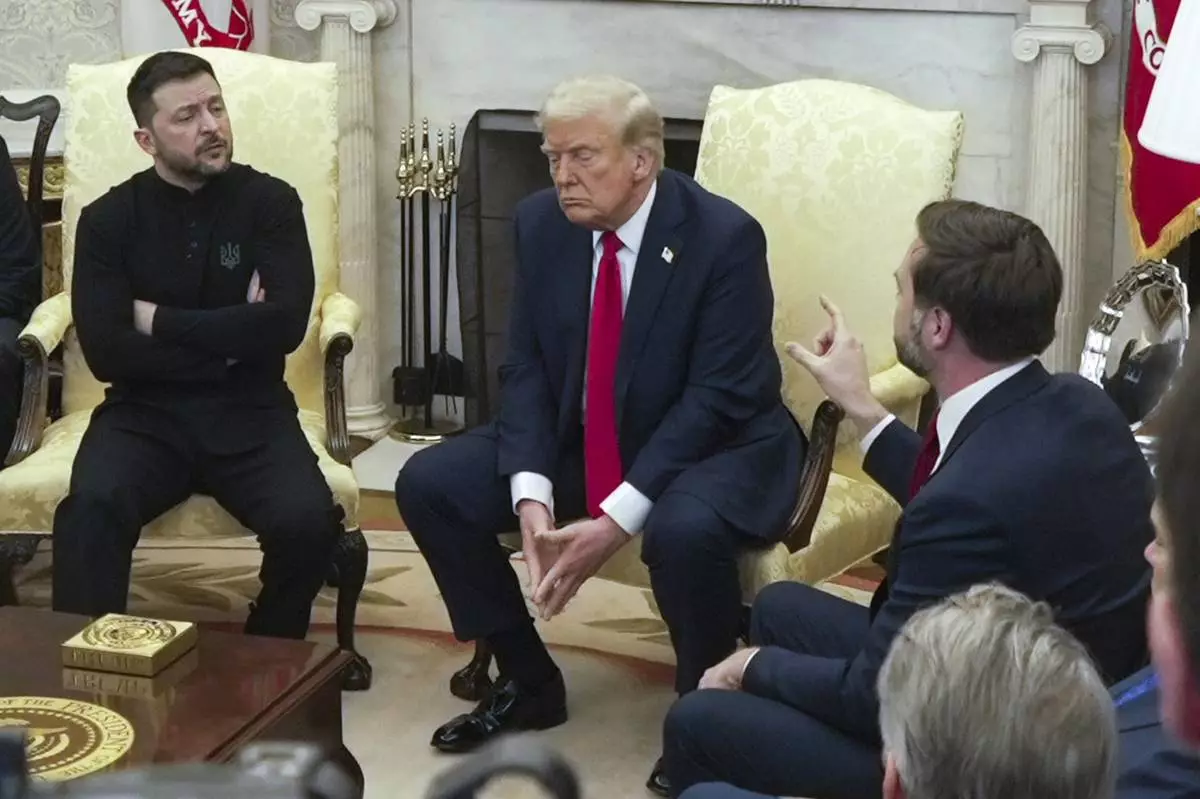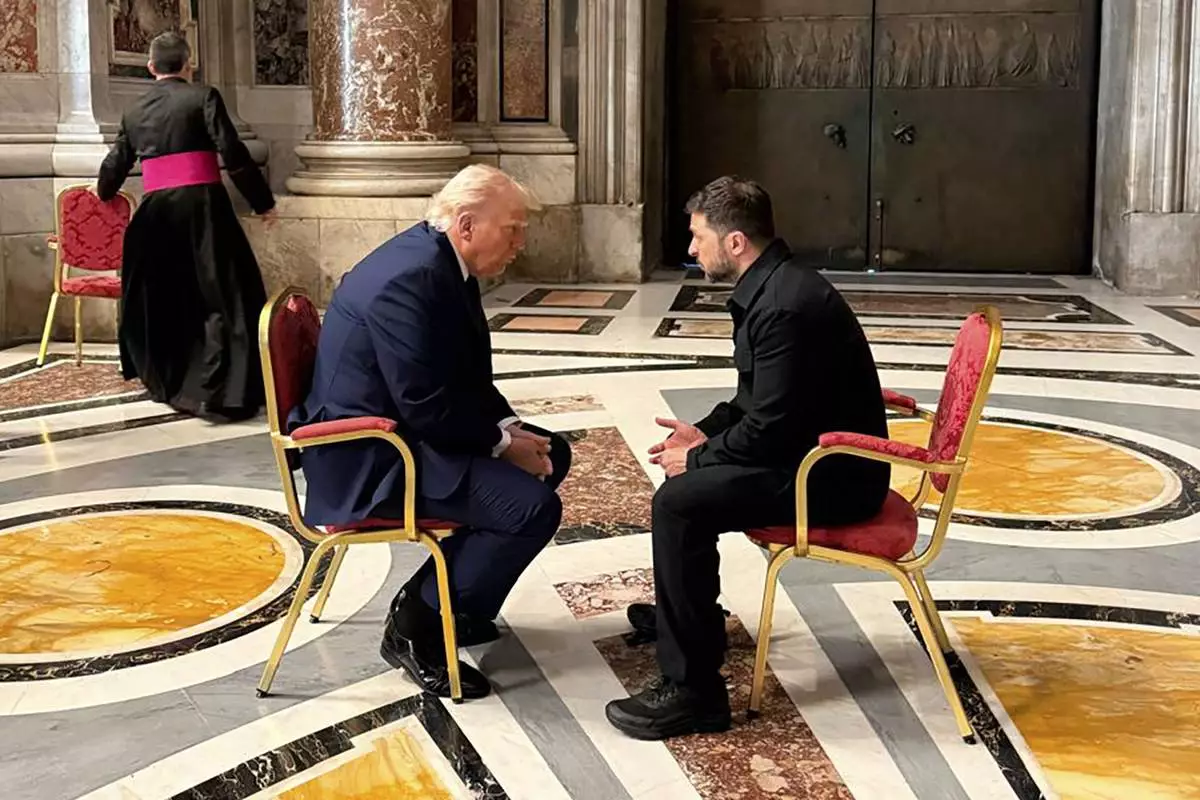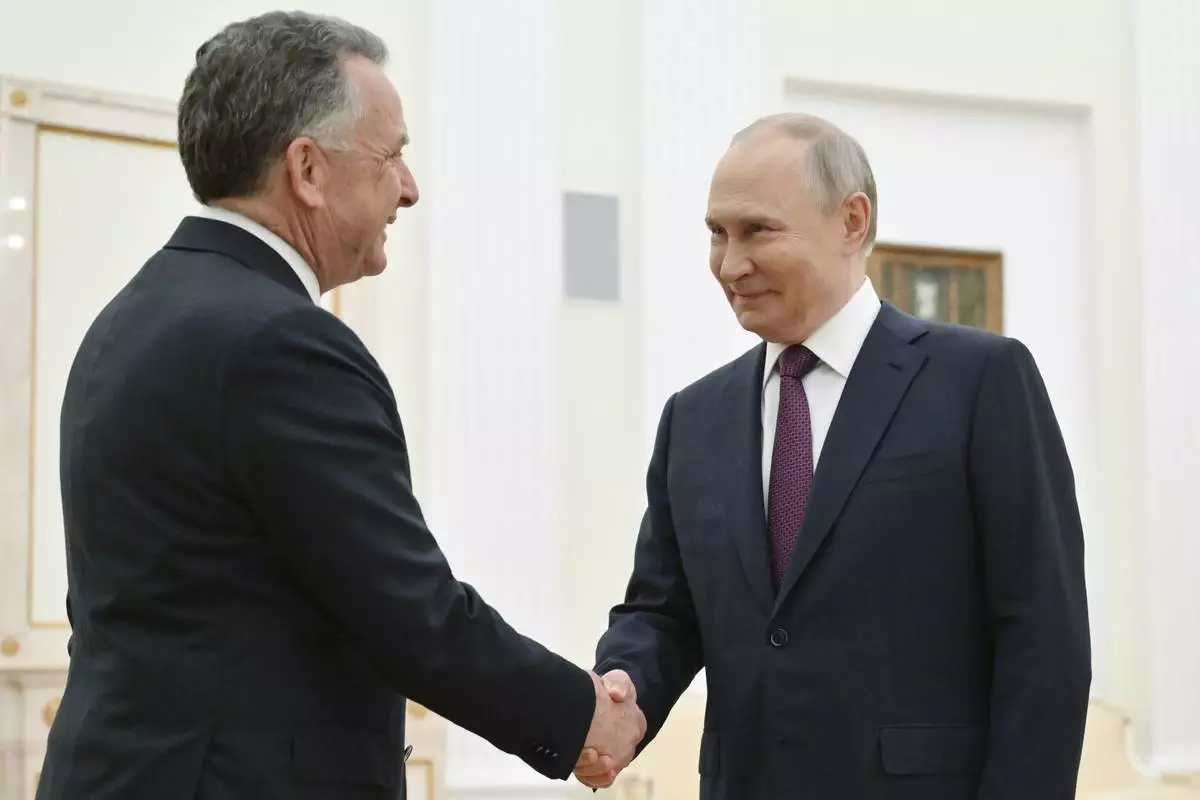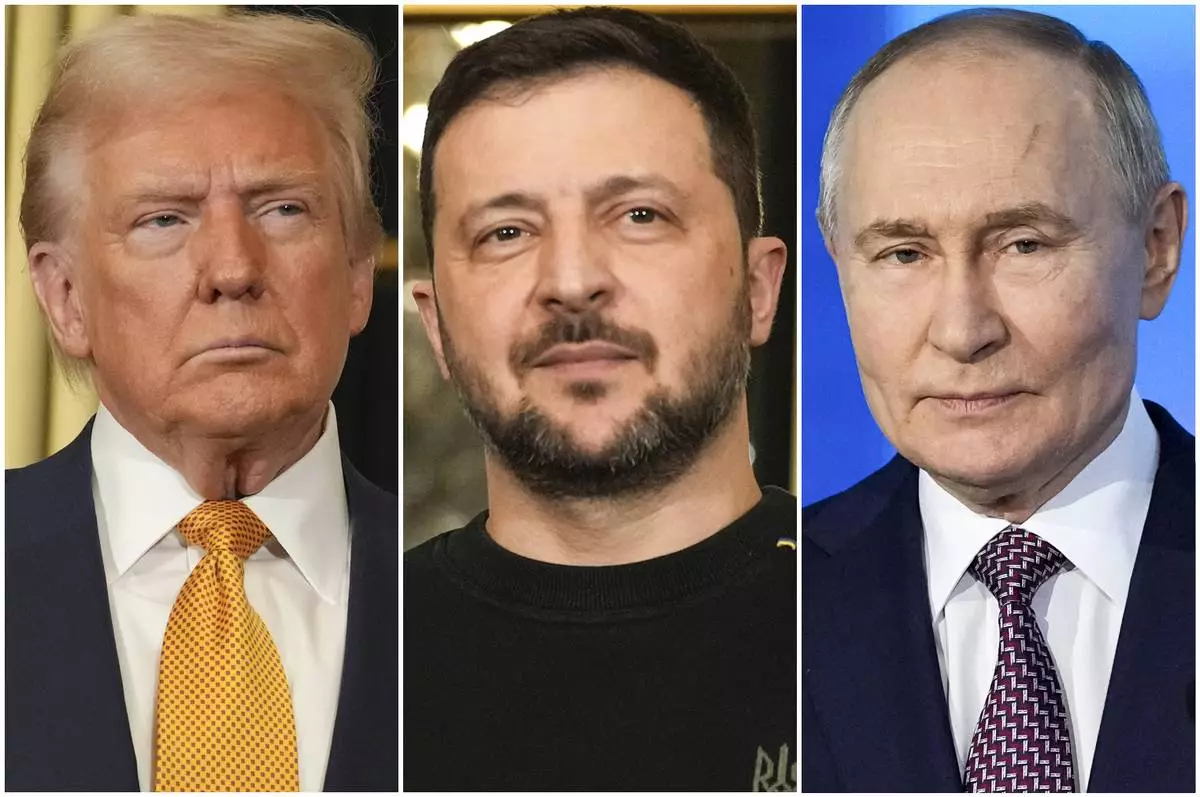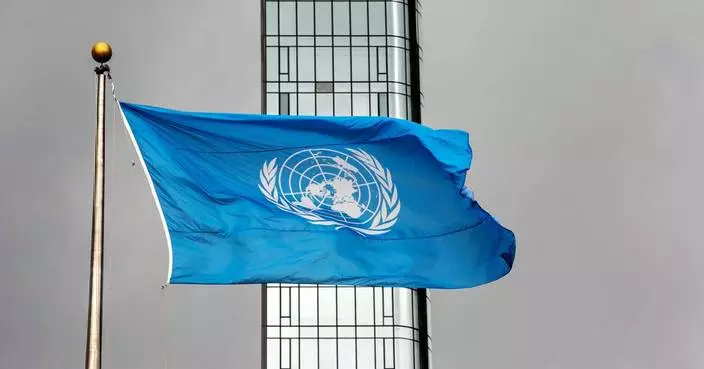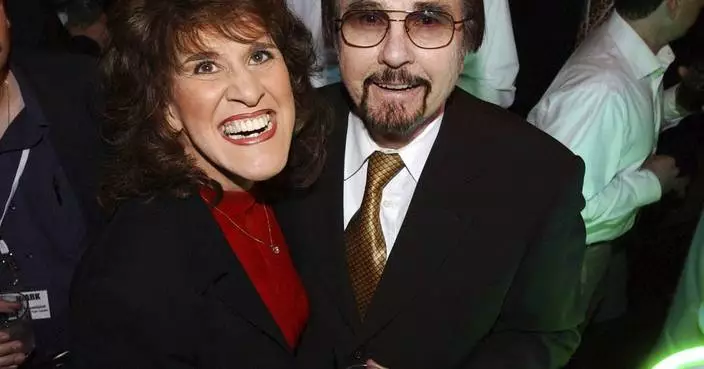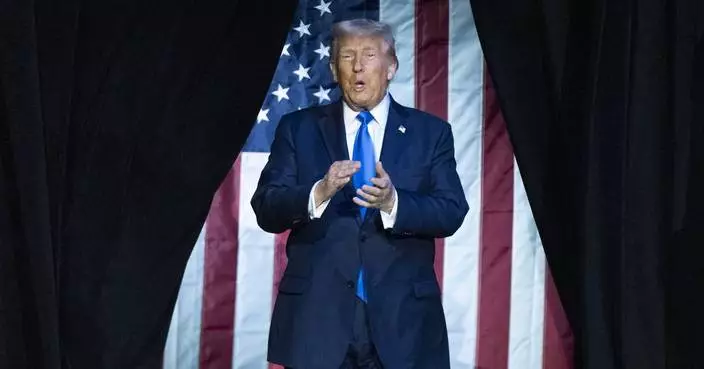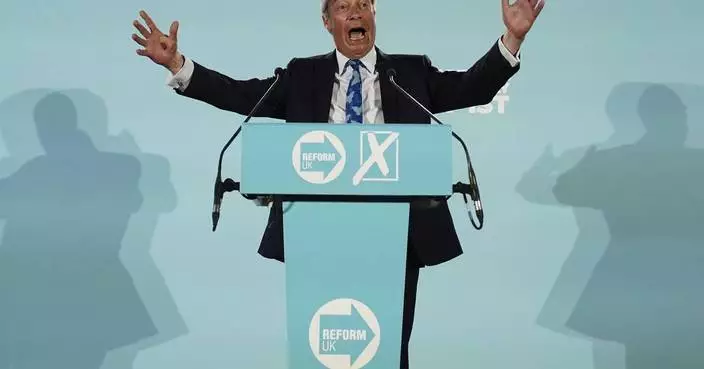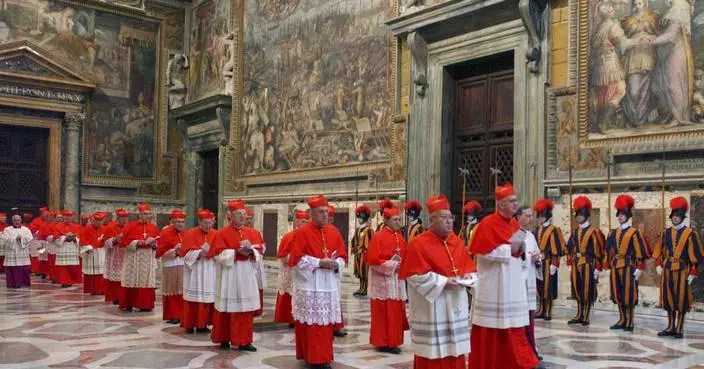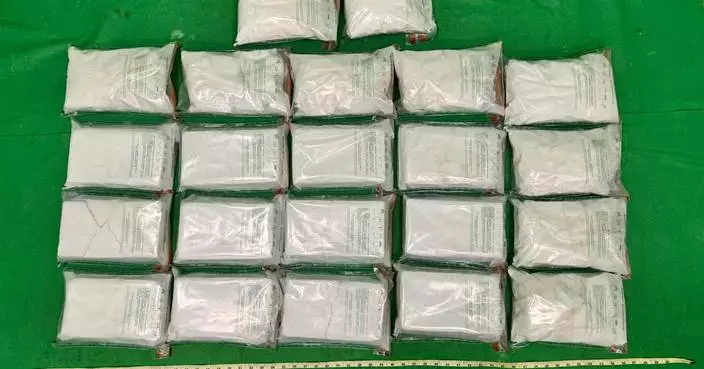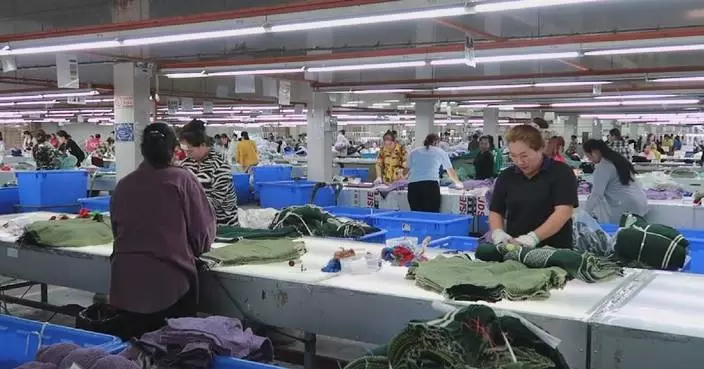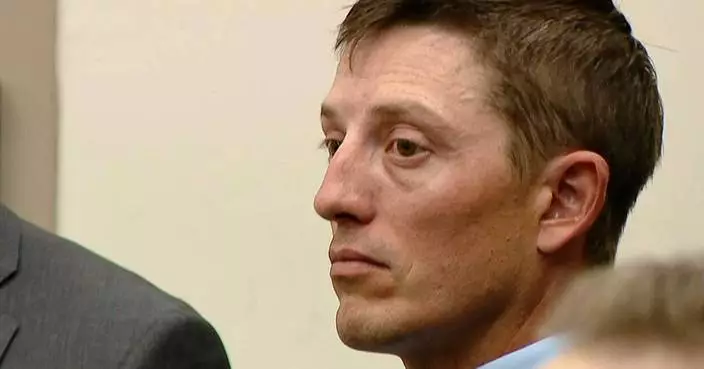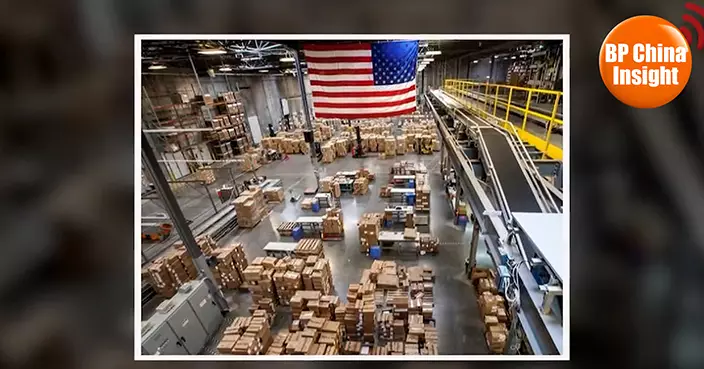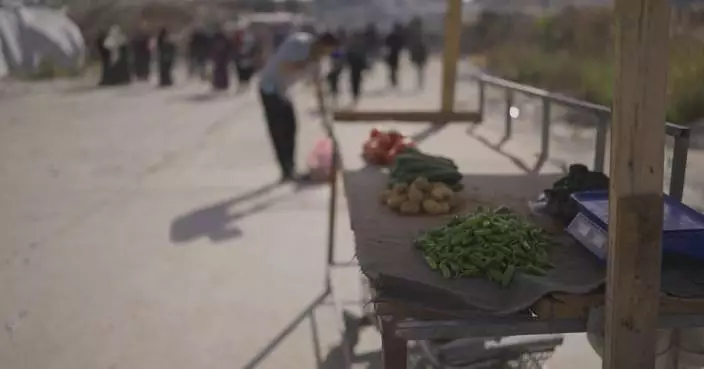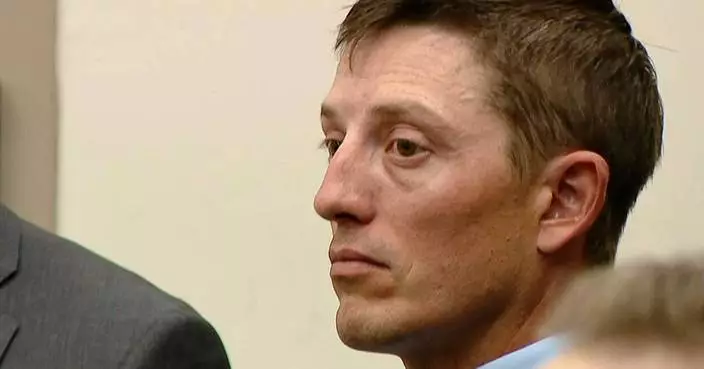Donald Trump, the candidate, pledged to get “transgender insanity the hell out of our schools" and "keep men out of women’s sports."
Donald Trump, the president, wasted little time delivering on his promise to address a topic that seemed to resonate across party lines. Trump issued an executive order on the day his second term began that called for “restoring biological truth to the federal government" and signed another on Wednesday titled “ Keeping Men Out of Women's Sports. "
The federal government now has wide latitude across multiple agencies to penalize federally funded entities that “deprive women and girls of fair athletic opportunities.”
"The war on women’s sports is over,” Trump declared.
Probably not. Legal challenges like the ones against other executive orders aimed at transgender people are likely and on Wednesday, the Trump administration sued Maine for not complying with the government’s push to ban transgender athletes in girls and women’s sports.
The biggest takeaway is that the Trump administration has empowered the federal government to take aggressive steps to go after entities — be they a school or an athletic association and now a state — that do not comply. Federal funding, and potentially grants to educational programs, could be pulled.
The threshold for noncompliance: Any entity that denies “female students an equal opportunity to participate in sports and athletic events by requiring them, in the women’s category, to compete with or against or to appear unclothed before males.”
The Education Department announced less than 24 hours after the order's signing that it was investigating San Jose State University, the University of Pennsylvania and the Massachusetts Interscholastic Athletic Association, all of which have had Title IX violations reported against them for allowing transgender athletes to compete. It also investigated Maine and last week referred the case to the Justice Department.
Every administration has the authority to issue its own interpretations of the landmark legislation best known for its role in ensuring gender equity in athletics and preventing sexual harassment on campuses.
Given the push-pull of how recent presidencies view Title IX, it has created a whiplash effect.
Joe Biden signed an executive order on his first day in office that interpreted sex as “gender identity" under Title IX, a move that protected transgender athletes from being discriminated against if they wanted to participate in a sport that aligned with their gender identity, not their sex assigned at birth.
Yet it took more than three years for Title IX regulations saying that to be finalized. And when they were, they lacked specifics sports and were put on hold by courts.
Trump's order explicitly states that sex means the “immutable biological classification as either male or female.” ‘Sex’ is not a synonym for and does not include the concept of “gender identity.” The order adds that “sexes are not changeable and are grounded in fundamental and incontrovertible reality.”
The decision marks a significant shift in the way Title IX is viewed and more explicitly, how it will be enforced.
That number is hard to pin down.
The NCAA, for example, does not track data on transgender athletes among the 544,000 currently competing on 19,000 teams at various levels across the country, though NCAA President Charlie Baker testified in Congress in December that he was aware of fewer than 10 active NCAA athletes who identified as transgender.
A 2019 survey of high school students by the Gay, Lesbian and Straight Education Network (GLSEN) noted just 5% of respondents said they participated in a sport that aligned with their gender identity. A 2022 report by the Williams Institute estimated about 300,000 high school-age students (ages 13-17) identified as transgender. How many of those young people participate in sports is unknown, but it is likely a tiny fraction.
The reach of Title IX extends far beyond the participation of transgender athletes. Noncompliance is believed to be widespread.
The Women's Sports Foundation noted in a 2022 report that there were still “gross gender inequities” across all college divisions and that there was “cause for concern about widespread Title IX noncompliance in high school and college and university athletic programs” even before the COVID-19 pandemic made women's sports even more vulnerable.
Yet to date no school at any level has had its federal funding rescinded for not meeting Title IX standards that require institutions to provide women with equal access and treatment, said Cheryl Cooky, a professor at Purdue University who studies the intersection of gender, sports, media and culture. She wondered where all this support for women's sports in general — and not on this issue specifically — has been for the last five decades.
“All of these other inequalities have existed and now you’re in a position of power to address those opportunities and this is what you're addressing?” Cooky said earlier this year. “The fact that this is the issue that the administration is concerned about speaks volumes in terms of how we value women in this society and how we value women’s sports in this society.”
Yet given Trump's unpredictable approach to governing, precedent and history might not apply.
About half the states have already enacted legislation that effectively bars transgender athletes from competing in the category that aligns with their gender identity. The AP reported in 2021 that in many cases, states introducing a ban on transgender athletes could not cite instances where their participation was an issue.
Some states are already planning to challenge the Trump order in court. Connecticut Attorney General William Tong called the order “mean spirited and unlawful” and called for those opposed to the order to “stand together and fight back.”
What also remains unclear is whether a federal agency can go after specific organizations — like state high school sports associations — that do not receive money directly from the federal government.
The NCAA Board of Governors moved quickly, amending its transgender participation policy to limit competition in women's sports to athletes assigned female at birth. The NCAA has more than 500,000 athletes competing for some 1,100 schools.
“We strongly believe that clear, consistent, and uniform eligibility standards would best serve today’s student-athletes instead of a patchwork of conflicting state laws and court decisions,” Baker said then. "To that end, President Trump’s order provides a clear, national standard.”
The National Association of Intercollegiate Athletics, the governing body for more than 200 small schools across the country, voted unanimously in 2023 to effectively ban transgender athletes from competing in women's sports.
On a move most saw coming once Trump won a second term, his administration still managed to sneak in a curveball.
The order calls for the office of the secretary of state to use “all appropriate and available measures” in hopes of having the International Olympic Committee come up with a uniform transgender policy. The organization has passed the buck for years, deferring to the international federations for each sport.
Kirsty Coventry, the sports minister of Zimbabwe, has replaced Thomas Bach as IOC president. A two-time Olympic champion swimmer, she told the BBC before her election that it is the IOC’s duty to ensure equal opportunity and fairness.
“I don’t believe we can do that based off of the medical and science research that I’ve seen if we add or allow for transgender women to compete in the female category right now,” she said then. “It is very clear that transgender women are more able in the female category, and can take away opportunities that should be equal for women.”
AP Sports Writer Graham Dunbar and Associated Press writer Geoff Mulvihill contributed to this report.

Greely High School, which was thrust into national spotlight after a state legislator posted about a transgender student-athlete, is seen Tuesday, April 8, 2025, in Cumberland, Maine.(AP Photo/Robert F. Bukaty)
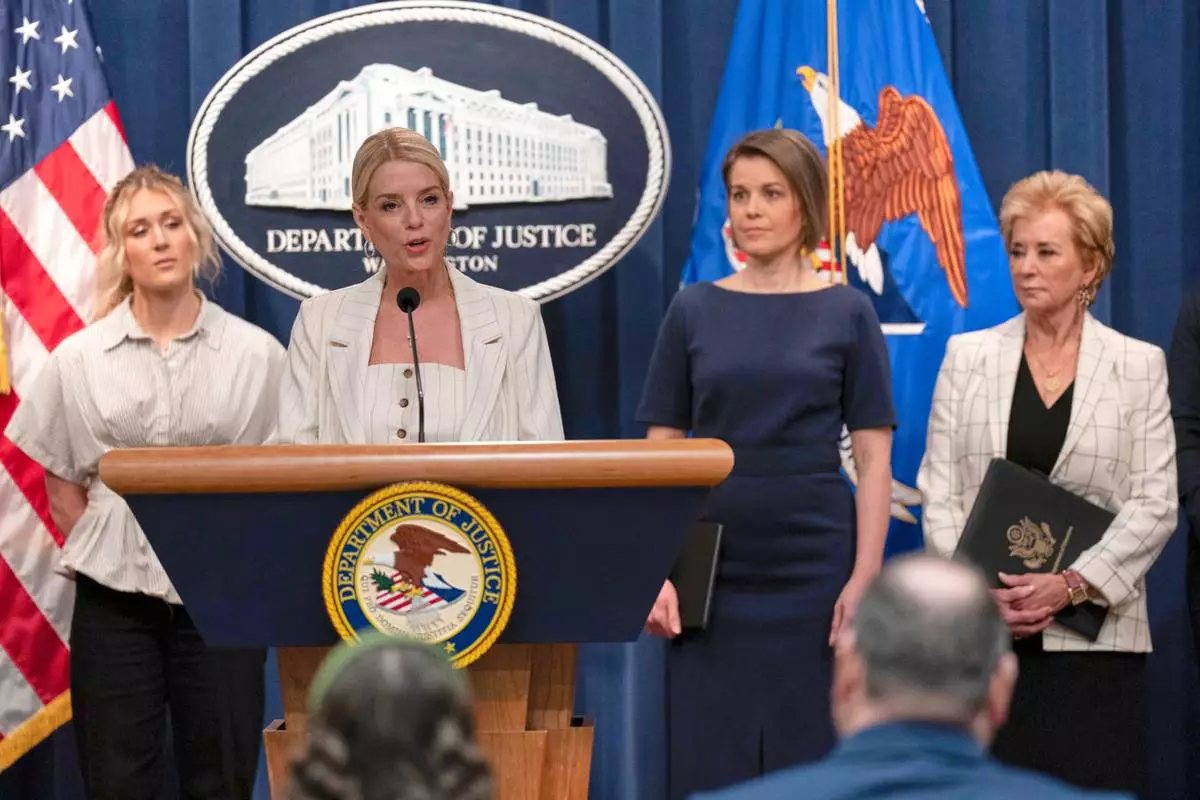
Attorney General Pam Bondi accompanied by from left Riley Gaines Rep. Laurel Libby R-Maine, and Education Secretary Linda McMahon speaks during a news conference to announce that the administration it is suing Maine’s education department for not complying with the government's push to ban transgender athletes in girls sports, at the Department of Justice headquarters in Washington, Wednesday, April 16, 2025. (AP Photo/Jose Luis Magana)
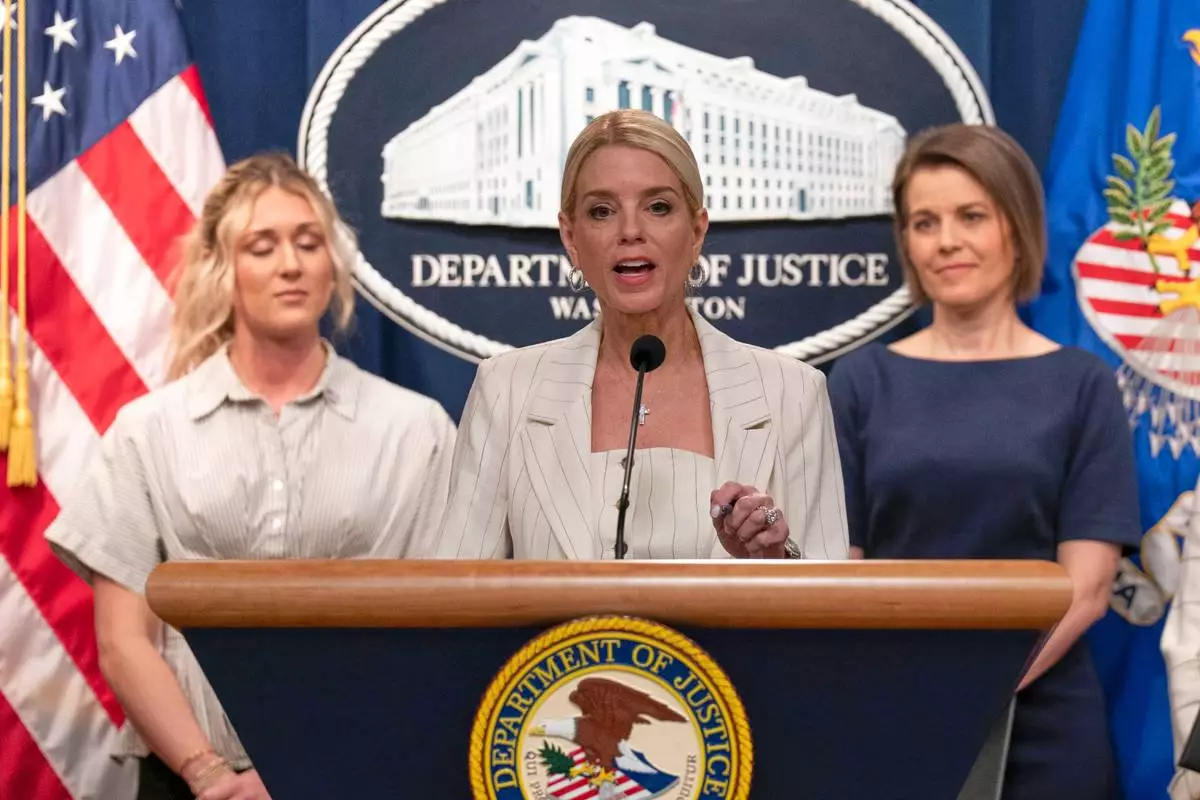
Attorney General Pam Bondi speaks during a news conference at the Department of Justice headquarters in Washington, Wednesday, April 16, 2025. (AP Photo/Jose Luis Magana)
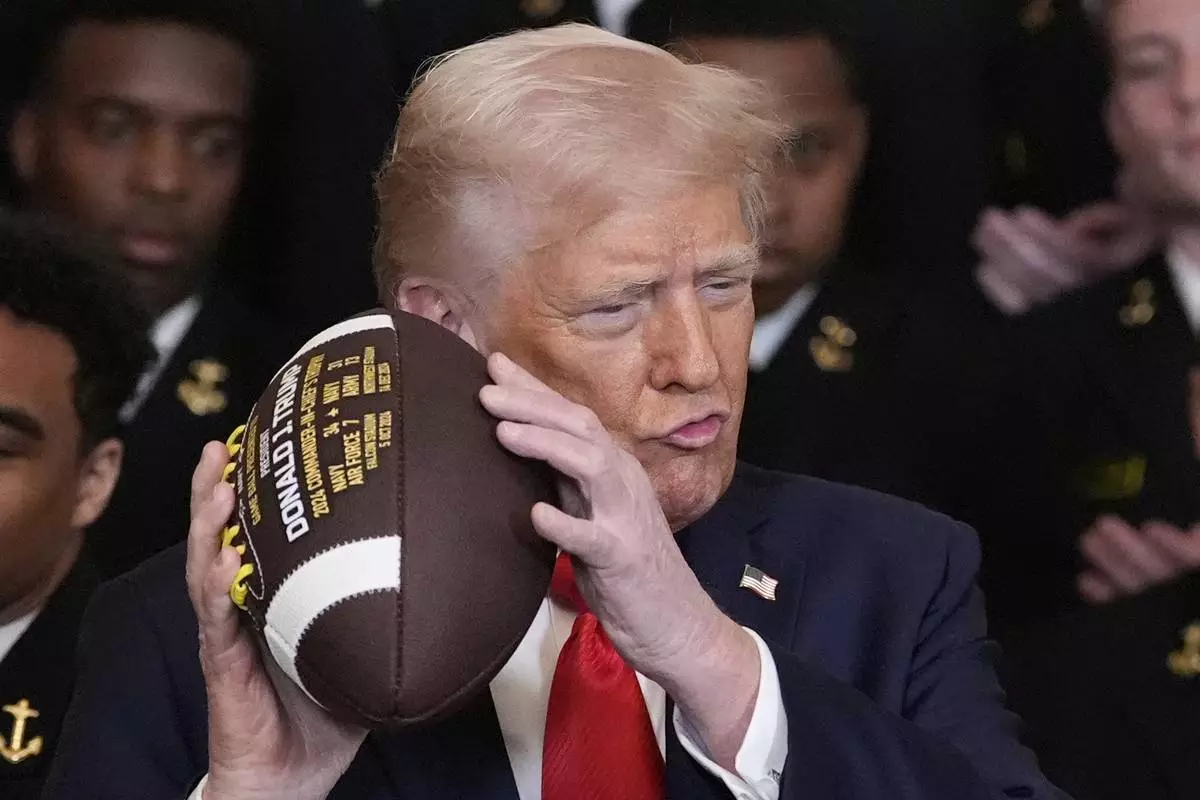
President Donald Trump holds a football during the Commander-in-Chief trophy presentation to the Navy Midshipman football team in the East Room of the White House, Tuesday, April 15, 2025, in Washington. (AP Photo/Alex Brandon)


